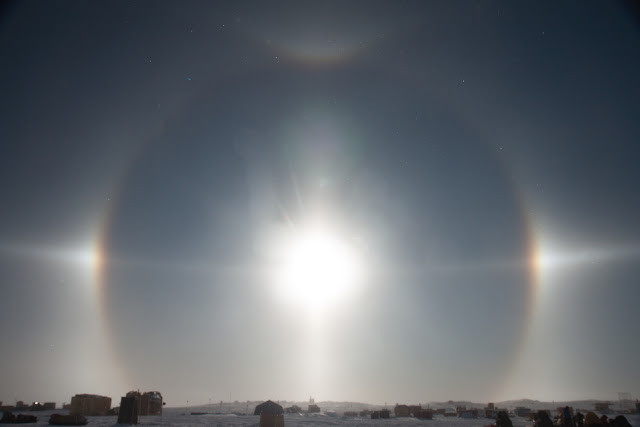My last day in McMurdo was a flurry of activities. The day started at 7:15 AM with a phone call asking me if I could get all of my gear together in 20 minutes so I could fly out that day on the med evac flight taking Jim to Christchurch. It took me a split second to answer with a "no". Much of the day was spent going around town and saying good-bye to, as well as thanking, people who were instrumental during the eight weeks of the field season. I also spent some time returning some of our gear, unpacking field equipment from WAIS, and organizing the lab. There are two additional co-workers that will be arriving in two weeks to continue the AWS field season. Lastly, it was unpacking my clothes, doing a little laundry, and then packing my gear to go back to Colorado. It was a very busy day and I was up late again making sure that everything was done. I also tried to slow down at the end to absorb some of my last few hours in McMurdo. Before going to bed, I took a picture of the sun at the same time as the last sunset that was seen on my second night in McMurdo. It has been amazing to see how much things have changed during my eight weeks in town.
 |
| A picture of the sun at 12:30 AM at approximately the lowest point in the sky on my last night in McMurdo, December 16th. |
 |
| A stop at the Rose Garden at the Christchurch Botanical Gardens on my one night in Christchurch prior to returning to Colorado. I saw my first sunset in nearly two month about a half hour later. |































